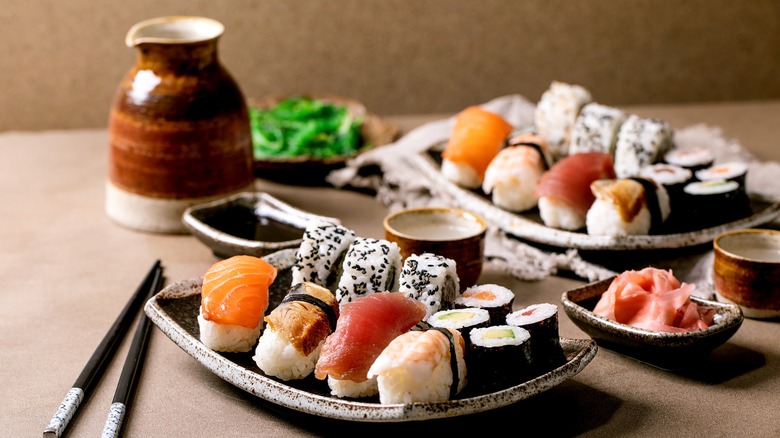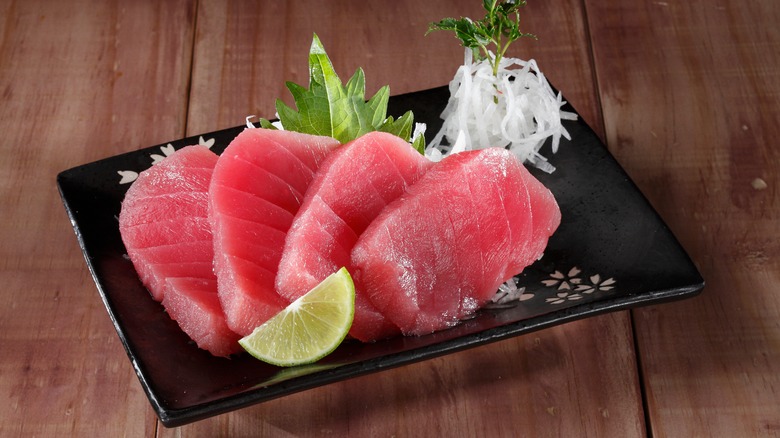The Best Tuna Cut To Order If You're Not Sold On Sushi
Eating sushi goes as far back as the 5th century B.C. in Southeast Asia, when fermented rice was used to preserve raw fish (via Kobe Teppanyaki). Here in America, however, eating raw fish is a relatively recent phenomenon, of at least the past 100 years. According to Jonas House, sushi really gained traction here in the 1960s. After World War II, Japanese Americans eating sushi became more well-known by the general population, and the widespread approval of sushi was symbolic of increased American acceptance of Japanese culture (via Taylor & Francis Online).
Sushi's popularity hasn't shown any signs of slowing down in the modern day. A study from the Japanese Ministry of Agriculture, Forestry, and Fisheries discovered that 71% of participants said they enjoyed sushi (via Small Screen Network). In addition, 62% of people who haven't tried it yet are willing to, according to a survey conducted by Pei Wei. However, there is clearly still plenty of skepticism around raw fish, as 94% would want to start off with cooked types of sushi only (via Kelton Global).
For those still questioning if they can really enjoy consuming raw fish, trying cooked varieties is a great option. But if you want to dip your toe into the world of raw sushi, try starting off with this cut of tuna.
Try smooth, lean, mild akami
If you're not sold on sushi, you may want to begin by eating varieties that have as little of a fishy taste as possible. David Myers, owner of a Californian-style Japanese restaurant in Los Angeles, recommends sampling akami, the top loin of the tuna. This cut is leaner than the rest of the fish, and has a nice, mild taste (via Michelin Guide). Akami is slightly sweet, according to Sushi University, with a smooth texture and a light acidic flavor. In addition, akami has the most umami flavor out of all the cuts of tuna, so the experience may be similar to what your taste buds are already used to, as opposed to other cuts with a strong, fishy flavor (via Sushi Modern). If you enjoy eating akami, you're off to a good start, as On the Gas explains that this is the part of the fish found in most tuna rolls.
Besides akami sashimi, another way to dabble in fishy flavors is to smother them with other ingredients that complement, and mask the taste to an extent. Spicy tuna rolls, salmon avocado rolls, and salmon mango rolls are great options for beginners, as they don't put the raw fish taste front and center (via Cozy Meal). And when in doubt, there's no shame in starting with a roll that has no raw ingredients.

